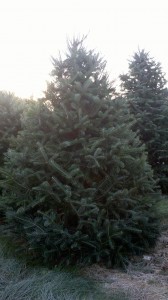 Believed to be a natural cross between Abies balsamea (Balsam Fir) and Abies fraseri (Fraser Fir), the Canaan Fir (pronounced Ka-nane) was first found in the Canaan Valley of West Virginia. Native along the Eastern U.S. Often referred to as Bracted Balsam Fir.
Believed to be a natural cross between Abies balsamea (Balsam Fir) and Abies fraseri (Fraser Fir), the Canaan Fir (pronounced Ka-nane) was first found in the Canaan Valley of West Virginia. Native along the Eastern U.S. Often referred to as Bracted Balsam Fir.
Used in the Christmas tree industry as well as nursery trade. Crushed needles carry a wonderful evergreen scent. Prefers well drained soils but is more tolerant of poorer soil conditions than other firs. Narrow conical habit.
Growth and Range
Canaan fir grows to 40 to 55 feet high and has a pyramidal shape with blue-green needles. Native populations are now restricted to Virginia and West Virginia, but may have grown from North Carolina to Canada during the last glacial period.
Stress Tolerances
Canaan fir is adaptable to many soil conditions and temperatures. It tolerates wet soils with poor drainage. Because its buds open late in spring, Canaan fir tolerates planting sites that experience late winter frost. Canaan fir is cold-hardy to United States Department of Agriculture hardiness zone 4.
Planting Conditions
Though Canaan fir can tolerate wet soils, it prefers sandy loam soil that is well-drained and has a pH from 5.6 to 6.0. This species does well when planted in either spring or fall.








